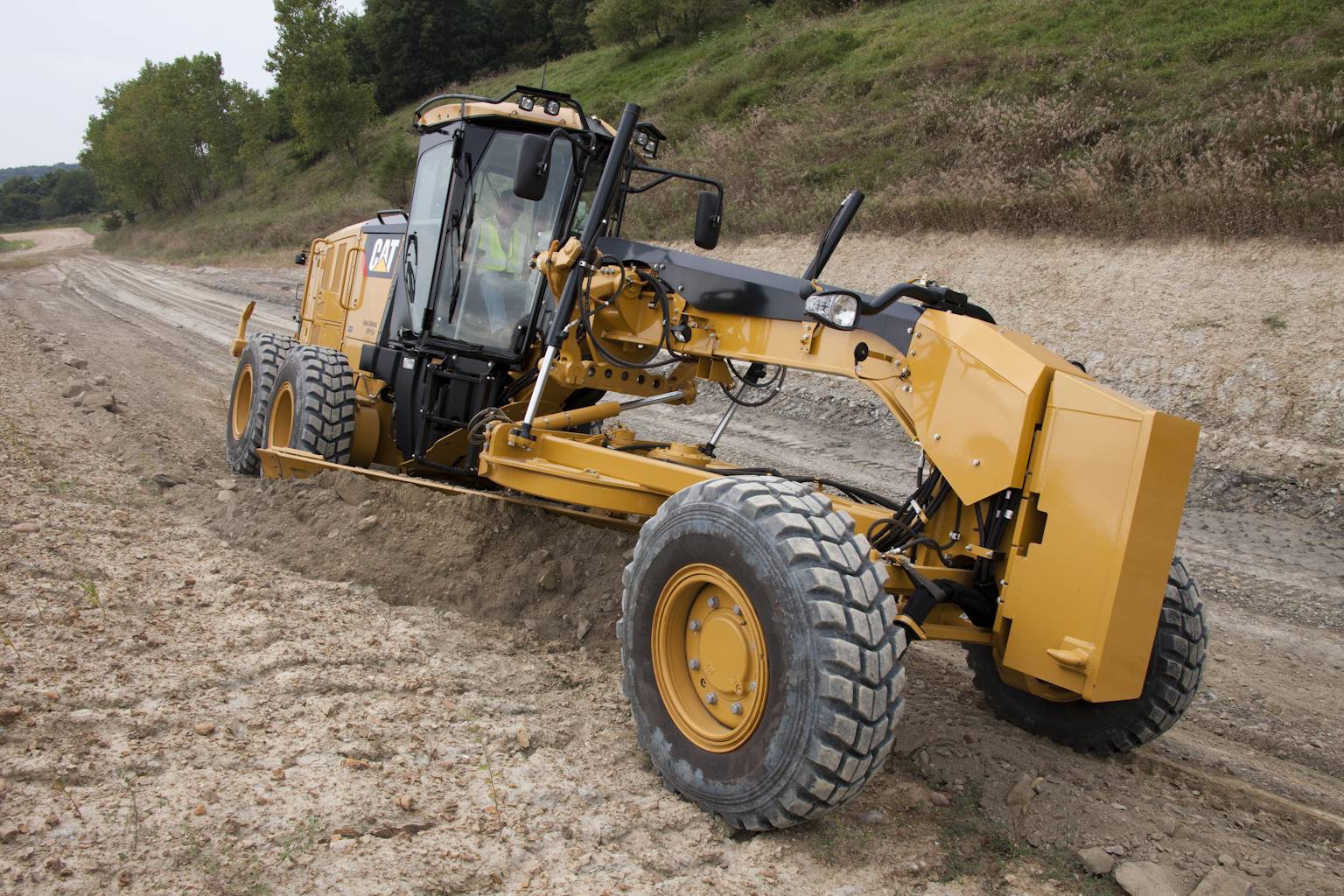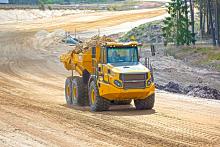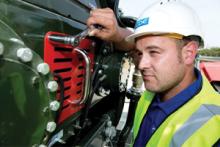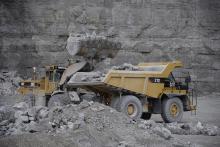
The maintenance of quarry sites and associated equipment is not only essential for health and safety but productivity as well.
Such maintenance includes regular inspection and, where necessary, the repair of fixtures such as haul roads, embankments and vehicles on site where tasks, including wheel washing, are a daily occurrence.
Ensuring plant operators and site engineers receive regular and adequate training is also essential says Ryan Barker, global service manager for
To most quarry operators such procedures are part of regular preventive maintenance, an activity that is usually planned and scheduled.
Indeed, haul road maintenance must be addressed continually as part of the operational cycle. Good roads improve production and extend tyre life and reduce overall operating costs.
The
“Roads must not be potholed or otherwise in bad condition and they should also be kept free of dust by regular wetting.
“There should be control measures in place to prevent dust reaching levels that could cause harm,” says the agency, which also points to roadside safety banks or barriers as being essential safety features at quarries.
“They can effectively reduce the number of accidents involving quarry vehicles.
“Safety banks deteriorate due to weathering and the traffic and they should be regularly inspected and maintained.”
According to a European directive, quarries have to be designed, constructed, equipped, commissioned, operated and maintained in such a way that quarry workers will be safe.
The risks of maintenance work can be minimised or even eliminated through good design and maintainability of the plant and machinery, the availability of the right tools for the job and by ensuring that workers have the relevant safety information for the equipment they are working on from the supplier or manufacturer
According to
"The construction and maintenance of a safe, productive haul road is crucial to site productivity. A poor haul road will immediately impact on site mobility with a negative effect on machine wear, fuel efficiency and your cost per tonne.”
It lists a good haul road as having constant grades (8-10%); three trucks width with a smooth surface; no blind spots; elevated curves, safety berms, and good drainage and dust control ( see also Equipment Focus this issue).
“Dust is generated by drilling and sawing, by blasting and excavation operations as well as by haulage.”
At its recent Quarry Days event at its Malaga Development and Learning Centre in Malaga, Spain, dealers and customers saw a demonstration of an entire quarry operation, including haul road maintenance.
Among equipment it highlighted was its M-Series motor graders for shaping and maintaining haul roads.
“Motor graders are designed to prepare the substrate of roads and create a flat surface,” says Caterpillar.
“Those, such as the Cat M-Series, will help keep down fuel consumption and tyre wear and damage, as well as improve the safety and comfort of truck operators. A well maintained road help insure longer machine component life.
“Once you have got your haul road built, there is another thing you cannot afford to overlook: dust. Small particles though they are, dust thrown up by continuous haulage on dirt roads can reduce visibility and mobility, in addition to causing health concerns for workers. Here’s where the water truck steps in. Equipped with a sophisticated system of water distribution, they efficiently reduce dust on haul roads and adjacent areas,” says Caterpillar.
It says that typically, the water trucks are of the same type as the main hauling system as they are then perfectly matched to the underfoot conditions.
For example, Philippi-Hagenbuch (PHIL) says its line of patented HiVol water tanks are built for any make or model of off-highway articulated and rigid frame truck.
“The HiVol water tank series serves as an ideal solution for a multitude of applications, including dust suppression, fire protection, road construction and wash down,” says the company.
It calculated the dynamic centre of gravity of the fluid within the tank to engineer the HiVol series to offer low weight and big carrying capacity, which can range over 270,000litres.
At the Gruvberget open pit mine in Svappavaara, a mining village situated within the municipality of Kiruna, Sweden, LKAB is using Volvo Construction Equipment machines to assist production and help maintain the site.
“We use
LKAB, one of the largest mining companies in Europe, has launched a growth project, LKAB 37, with a goal to expand its production capacity to 40 million tonnes by 2015.
“Mining and quarrying as a high profile activity needs to remain ahead with safety and good practice for vehicle cleanliness to the local environment and community, says Wheelwash, a provider of wheel washing systems and solutions.
Indeed, Wheelwash and Weightron Bilanciai have established a complementary working relationship.
Weightron manufactures weighbridges and weighbridge management systems, while Wheelwash provide industrial wheel and vehicle washing solutions.
Weightron’s director Nick Catt and Wheelwash’s general manager Ian Jolly believe the association will provide mutual benefits for their respective companies and the end customer:
“Although the product ranges are quite different, they are often used in the same application, addressing important legislative requirements. Vehicle weighing is a crucial process at a wide range of industrial sites, including mining and quarrying, waste and recycling, construction, utilities, energy from waste (EfW), bulk handling and primary metals manufacture.
“In parallel, vehicles and machinery leaving site must not contaminate public highways with debris and dirt. From a logistical point of view it makes sense in many applications for weighbridges and wheel washing equipment to be located close to each other.”
On ttraining, Ryan Barker of CEE says: “We are all aware of the tight legislative requirements when it comes to onsite safety and the operation of machinery.
“Quarrying has inherent dangers and it’s from this premise that this industry is so heavily governed by health and safety laws. There is a legal onus on companies to provide adequate frameworks of training to ensure that everyone working within this type of environment is competent for the work they carry out on a daily basis as laid out in The Provision and Use of Work Equipment Regulations 1998 Part 2 Regulation 9 (1) in the UK.
“Very often employers don’t recognise the added value of trained operators over and above legal requirements. The primary focus for a company is obviously to provide a safe working environment for employees but other benefits exist and are often undervalued.”
Barker says that in the UK training is required by the Occupational Safety and Health Administration (OSHA) for any employees who will operate quarry equipment.
“It has therefore become standard practice to ensure that operators are properly trained to have the experience and knowledge to work safely at all times and part of this basic requirement includes the delivery of onsite inductions for all new individuals to site.
“Setting aside the legislative tick-box exercise of which training is a prerequisite, adequate job-specific training can lead to substantial benefits for the employer and the workforce. This can include enhancing morale by raising operator confidence, reducing accidents and work-related injuries, reducing any potential damage to the plant, minimising plant repairs and increasing overall plant uptime and productivity. These benefits can help to substantially improve overall site processes and ensure smooth operation of the plant.”
He says that most providers of quarry equipment offer training programmes that can be tailored to a specific company’s requirements, while the most valuable approach is training conducted onsite within the environment where the operators will be working daily.
“Moreover, if companies have their own in-house expert, this will ultimately save money by avoiding costs associated with onsite labour charges. Trained, competent operators will have the required skills to change complex parts of the plant and diagnose or prevent any potential issues which will ensure maximum uptime.
“Training is a critical factor in providing site operatives with an understanding as to how they can support and maximise the achievement of a maximum throughput of material.
“Training is time and money well spent: it is an investment rather than an expense which can result in fewer injuries and lower insurance premiums. An effective plant operator training programme can maximise uptime and increase productivity, benefiting the employee, the company and ultimately the customer,” says Barker.











